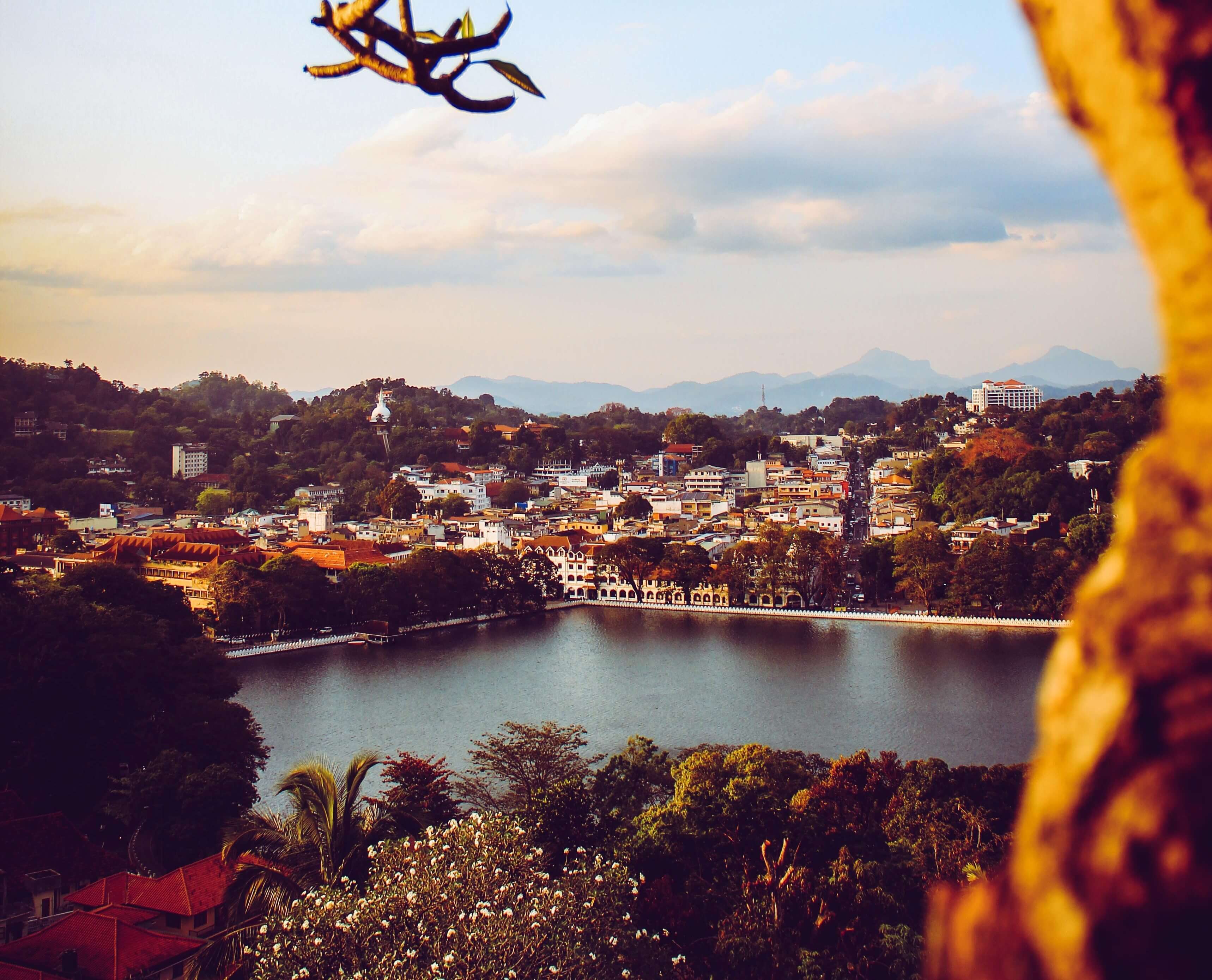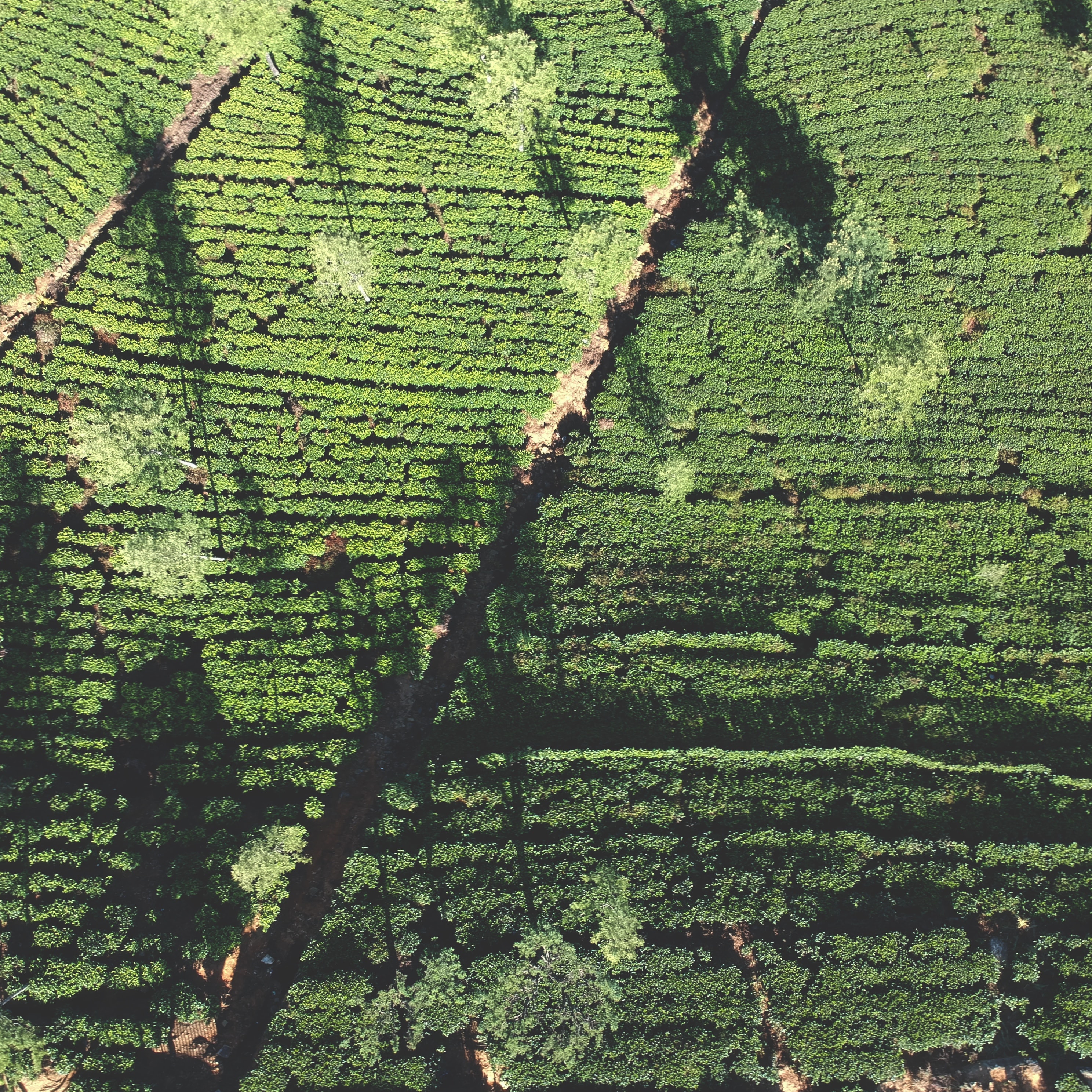Tea from Sri Lanka is world-renowned and enjoyed for its copper color and lively, spiced flavor. Known as Ceylon until 1972, the island located south of India has deservedly become the world’s third biggest tea producer. Come and discover Ceylon tea as join us on the Podi Menike, a train that crosses the tea plantations of Kandy, Nuwara Eliya, and Uva. All aboard!
The Kandy District: a fragrant, full-bodied tea
Our first stop is in Kandy, Sri Lanka’s cultural capital. The city is nestled on a plateau surrounded by enchanting mountains. The landscape is covered with tropical forests and tea plantations. The Ceylon teas produced there are generally full-bodied and very fragrant. Moving as if in slow motion, no faster than 12 15mph, the train offers a timeless experience… Your fellow passengers will include tourists, of course, but also local families on their way to work in the plantations. Merchants walk through the carriages with big, colorful baskets, and you will see exceptional landscapes from the windows!

Nuwara Eliya: a floral tea with an amber liquor
The views will now include countryside stations with an old-fashioned charm, forests, a little mist, tea, sun, rice fields, lakes, and even more tea… In the midst of the plantations, the tea pickers may even give you a little wave. Around three hours and thirty minutes of magic later, you will arrive in Nuwara Eliya… This town perched at 6,200 feet of elevation seems to belong to another continent. Nicknamed “Little England,” it is filled with buildings in the colonial style. The perfect place to take a break and visit one of the many Ceylon tea plantations. Relatively unaffected by the monsoon, this region’s best tea harvest takes place between February and April. When brewed, teas from Nuwara Eliya reveal a clear, amber-colored liquor and floral flavors of jasmine.
Uva: a round, coppery tea
The Podi Menike train then takes you to up to Ella, located at more than 3,200 feet of elevation in the Uva district. Here, a dry wind blows over the tea plantations from June through September. These climate conditions help create the tea’s aromatic characteristics. Ceylon teas from Uva are recognizable by the copper color they release when brewed, and offer a round, sweet flavors. Teas from Uva are some of the least full-bodied of the Sri Lankan teas.
Finding out more about Sri Lankan teas
A trip on the Podi Menike means meeting local tea pickers and learning a little more about Ceylon tea! After disembarking, you will also know more about…

…the origin of Ceylon tea
Tea was introduced to the island of Ceylon (now Sri Lanka) by the English around 1860. James Taylor planted the first tea bushes imported from China and Assam in India. Shortly after, a parasite decimated the coffee plantations growing on the island. As a result, global prices slashed coffee profits and created the perfect context for tea to step in as a new, popular drink.
…the grades of Ceylon tea
Just like Indian black teas, teas from Sri Lanka have different grades:
-
Flowery Orange Pekoe: FOP is a blend of the top bud and the two highest leaves on each stalk. The picking process is known as the “imperial” harvest. If these leaves are ground into a powder, the result is known as Broken Orange Pekoe (BOP), Broken Orange Pekoe Fannings (BOPF), or Dust tea.
-
Orange Pekoe: OP tea is made with thin, young leaves found almost at the top of the plant.
-
Pekoe: These leaves are a little larger than those picked for the Orange Pekoe. They are less delicate and make a lighter tea.
-
Souchong: These leaves are picked from lower down the tea bush, and are wide, older, and contain less caffeine.
Did you enjoy your journey through the land of tea? If you want to take home a souvenir or sample the delicious flavors of tea from Sri Lanka, you can discover our very own Ceylon OP.

